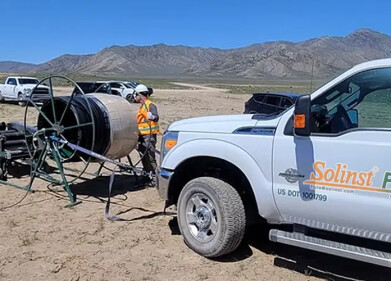Business News
Take a Glimpse into the Future of London’s Buildings with this 3D-Printed Model
May 14 2015
Have you ever wondered how London might look in a decade’s time? Well, a brand new 3D-printed model unveiled in April at The Building Centre in the UK capital has sought to do exactly that.
Recreating an 85km2 stretch of the city, the model uses colour coding to indicate which areas are protected from further construction due to historical landmarks and which have not yet been built. The model is 12.5m long in its entirety and was engineered by design innovators Piper.
The Devil is in the Details
The whole project took five months to assemble and was largely manufactured with the use of 3D printing technology. Amazingly, 170,000 of the total buildings included in the model were built recently enough to have accessible digital design blueprints. These blueprints were then processed by a 3D printer, which scaled them down to a fraction of their size to create diminutive but incredibly accurate representations.
Of course, there were many other buildings which were too old to have digital blueprints. These had to be laser-cut – or even more painstaking, fashioned by hand – to complete the project. This part was more of a stumbling block and cost Piper a quarter of a million pounds to complete… but the end result is worth the outlay.
Using Ordinance Survey assistance (the mapping agency for the UK), Piper were able to thoroughly recreate London’s landscape down to the nearest centimetre.
The Ghost of Things to Come
As well as colour coding protected sites red and yellow, the manufacturers also adopted the novel idea of including buildings that have not actually been constructed yet. They did so by incorporating 263 tall buildings which have received planning permission but have not yet gone up. These are coded bright white (in contrast to the grey of already existing edifices) and offer visitors the chance to view London as it may look in 10 years.
The model is also rigged up with an elaborate projection and lighting system. This allows visitors to select different parts of the city and view them on a big screen. Even more exciting, digital animations can be projected onto certain parts of the model to recreate historical events. For example, the Great Fire of 1666 can be reimagined, with the financial district appearing to be on fire.
The model is just one way fascinating way that technology has improved our knowledge and insight into how the city looks and will look. Radar technology is another innovation which has allowed us to monitor the Thames, gauging water levels and remotely controlling sluices such as the Thames Barrier. Clearly, technology has made great strides in its development and the landscape of London is sure to follow in the next decade or so. Visit The Building Centre now to get a sneak peek into its imminent evolution.
Digital Edition
AET 28.4 Oct/Nov 2024
November 2024
Gas Detection - Go from lagging to leading: why investment in gas detection makes sense Air Monitoring - Swirl and vortex meters will aid green hydrogen production - Beyond the Stack: Emi...
View all digital editions
Events
Jan 20 2025 San Diego, CA, USA
Carrefour des Gestions Locales de L'eau
Jan 22 2025 Rennes, France
Safety, Health & Wellbeing LIVE
Jan 22 2025 Manchester, UK
Jan 25 2025 San Diego, CA, USA
Jan 29 2025 Tokyo, Japan



















